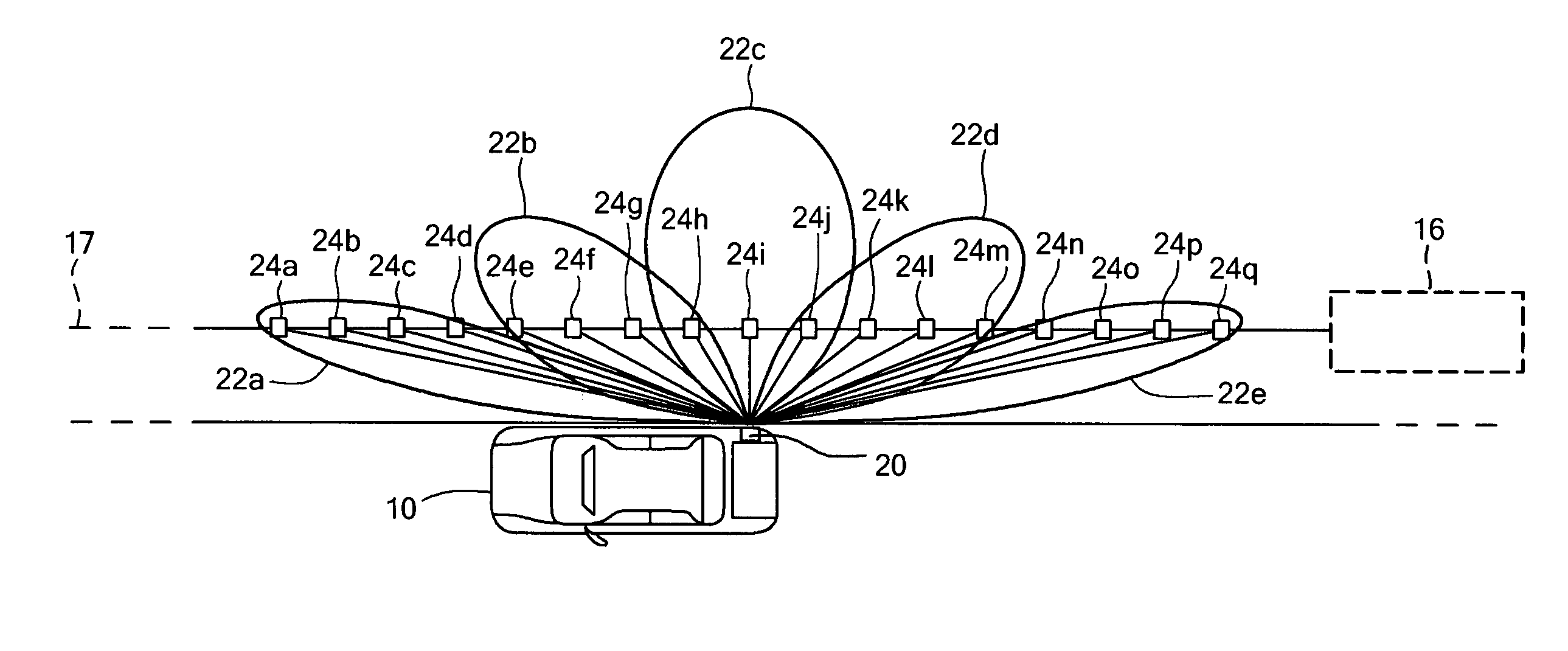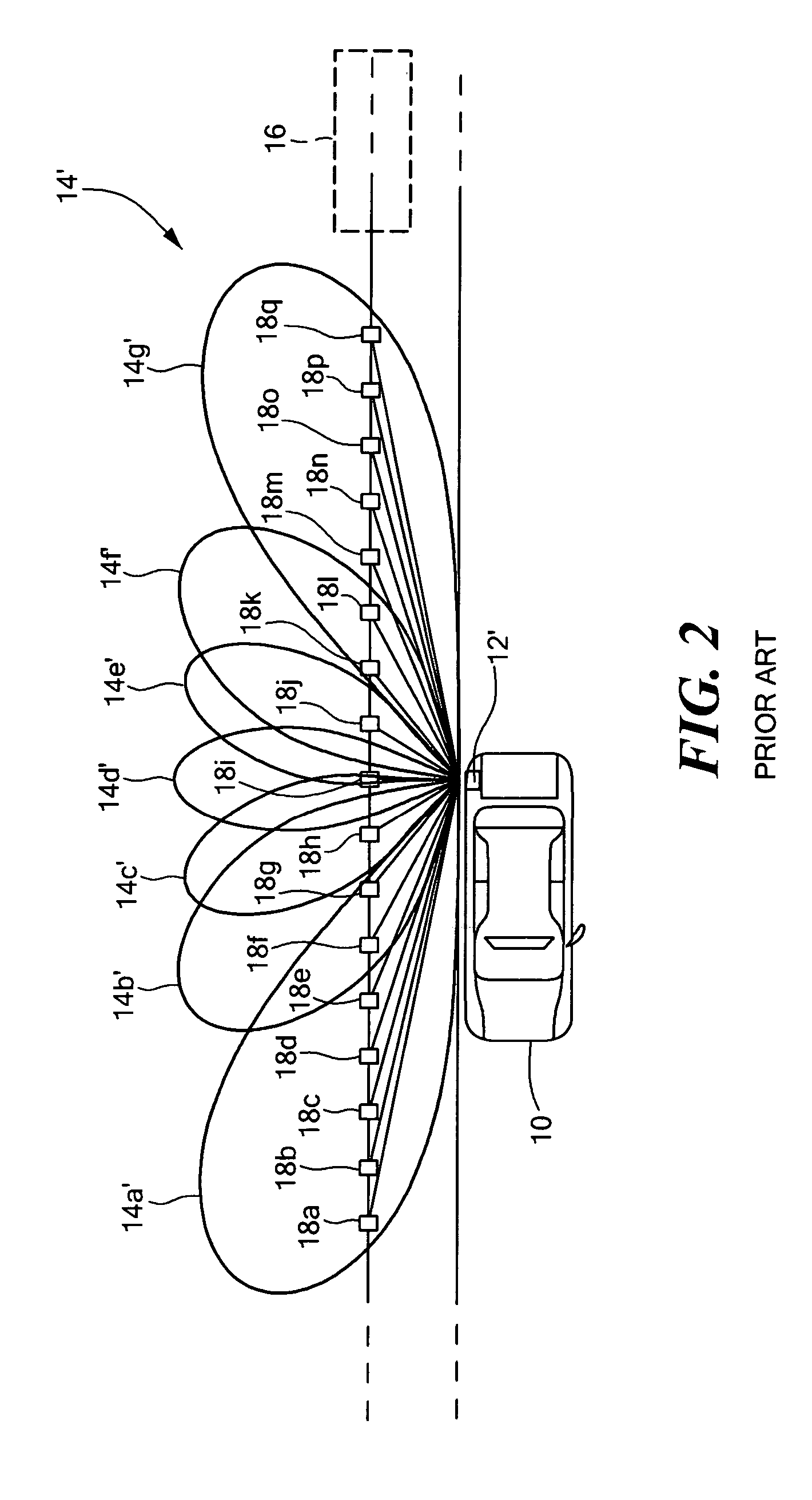Beam architecture for improving angular resolution
a beam structure and antenna technology, applied in the field of radar systems, can solve the problems of relatively high cost, relatively difficult design of radar systems for commercial products, and low so as to improve the angular resolution of antenna systems, improve radar performance, and improve angular resolution
- Summary
- Abstract
- Description
- Claims
- Application Information
AI Technical Summary
Benefits of technology
Problems solved by technology
Method used
Image
Examples
Embodiment Construction
[0024]Referring now to FIG. 1, a vehicle 10 has a prior art automotive radar system 12 disposed on a side thereof. The automotive radar system 12 may, for example be provided as a side object detection system (SOD) also sometimes referred to as a blind spot detection system. A typical prior art automotive radar system, such as radar system 12, includes a planar array antenna capable of generating multiple antenna beams with five antenna beams (or more simply “beams”) 14a–14e being here shown. In automotive radar applications, the azimuth plane of the antenna often corresponds to the plane of the road surface
[0025]Radar 12 detects an object 16 moving along a path 17 which is parallel to the path of the vehicle 10 in which the radar 12 is disposed. The object 16, may for example, be another vehicle approaching and passing vehicle 10 in which the radar is disposed. The vehicle 16 can thus correspond to a vehicle in a lane in which is adjacent the vehicle 10 and thus the vehicle 16 is s...
PUM
 Login to View More
Login to View More Abstract
Description
Claims
Application Information
 Login to View More
Login to View More - R&D
- Intellectual Property
- Life Sciences
- Materials
- Tech Scout
- Unparalleled Data Quality
- Higher Quality Content
- 60% Fewer Hallucinations
Browse by: Latest US Patents, China's latest patents, Technical Efficacy Thesaurus, Application Domain, Technology Topic, Popular Technical Reports.
© 2025 PatSnap. All rights reserved.Legal|Privacy policy|Modern Slavery Act Transparency Statement|Sitemap|About US| Contact US: help@patsnap.com



